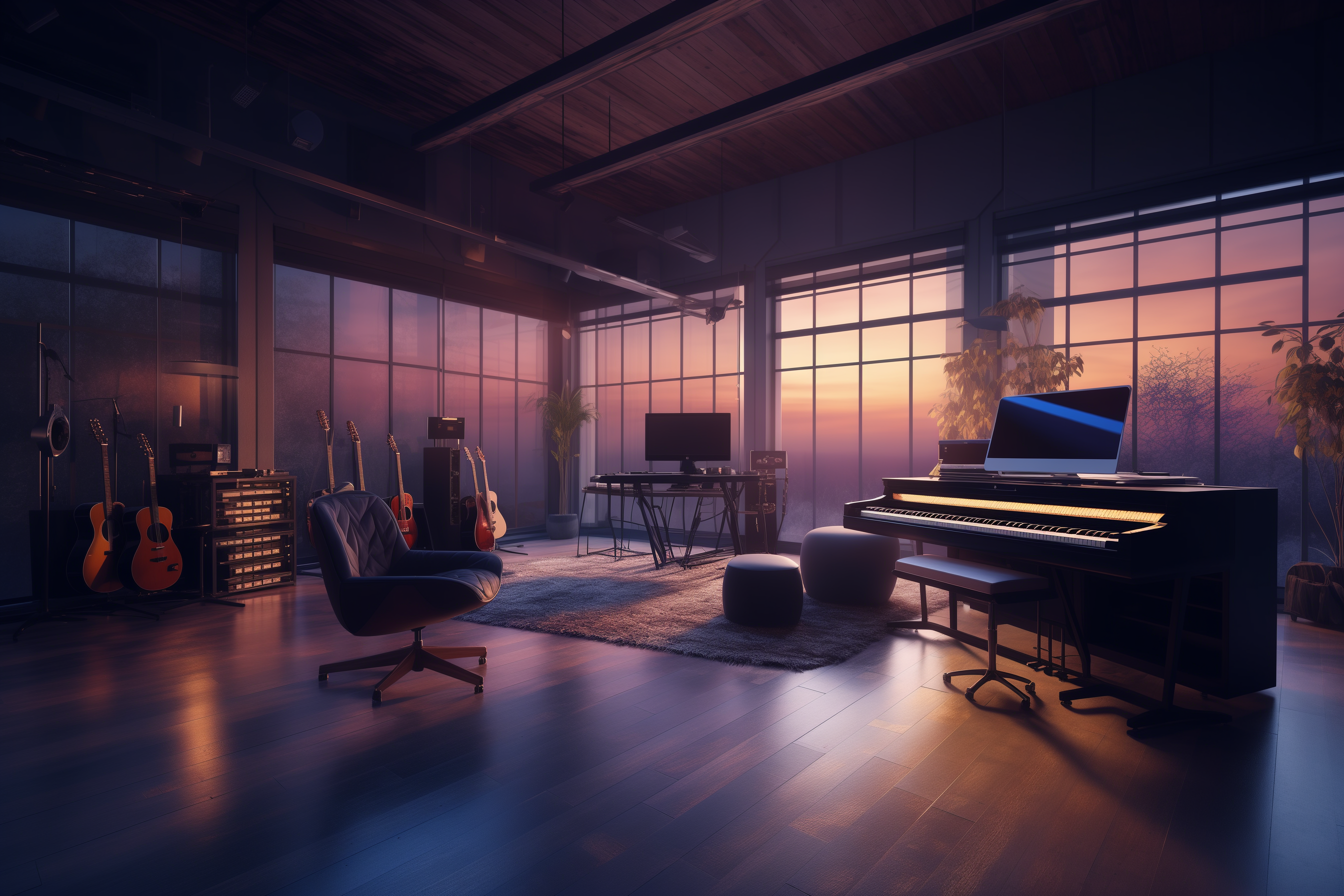The song creation process is as diverse and unique as the artists who embark on it, but there's a universal truth to crafting music that resonates: it's a journey of exploration, creativity, and technical skill, all rolled into one, know as an artist's sonic identity. Whether you're an aspiring artist dreaming of making your mark in the music industry or a seasoned musician always looking to refine your craft, understanding the A-Z of song creation is crucial. So, let's break it down into digestible steps, keeping it real and relatable.
A. Inspiration and Conceptualization
Every great song begins with a spark of inspiration. It could be a melody that haunts you in the dead of night, a chord progression that moves you, or lyrics that flow from your deepest emotions. Embrace these moments. Inspiration can come from anywhere—personal experiences, stories, landscapes, or even a conversation. The key is to be open and receptive.
B. Melody and Harmony
Once you've got the concept, start fleshing out the melody—the backbone of your song. Hum it, whistle it, or play it out on an instrument. It doesn't have to be complex, but it should be memorable. Alongside melody, think about harmony. The chords you choose to accompany your melody will set the mood and emotion of your song. Experiment with different chord progressions until you find one that complements your melody and enhances the song's feel

C. Lyrics Writing
Lyrics give your song personality and message. They're what make listeners connect on a personal level. Write from the heart, but don't shy away from revising and refining. Sometimes, the right words take time to come. Be patient, and play around with different rhyming schemes and structures. Remember, there's no one-size-fits-all approach to writing good lyrics. Be authentic—your voice is your signature.
D. Structure and Arrangement
Think about your song's structure—verse, chorus, bridge, etc. A well-structured song guides the listener through the experience you want to convey. Each section should serve a purpose, whether it's building tension, providing release, or adding depth. Arrangement involves deciding what instruments will be used and how they'll interact. This is where you can get creative, blending genres, and experimenting with sounds.
E. Demo Recording
Now, it's time to lay down a rough version of your song, also known as a demo. Don't worry about making it perfect. The goal here is to capture the essence of your song. Use whatever recording equipment you have at your disposal, even if it's just your phone. A demo serves as a blueprint and helps you refine your ideas. Here's a quick home studio setup checklist to get you started from ground zero.

F. Production
This is where your song truly comes to life. Whether you're self-producing or working with a producer, the production phase involves recording, editing, mixing, and mastering. Each step is crucial:
- Recording: Capture each element of your song with clarity and quality.
- Editing: Tighten up the timing, pitch correct where necessary, and clean up the tracks.
- Mixing: Balance the levels, pan, and apply effects to achieve a cohesive sound.
- Mastering: Polish the final mix to ensure it sounds great on any playback system.
G. Feedback and Revisions
Don't skip this step. Share your song with trusted friends, fellow musicians, or a mentor. Constructive feedback is invaluable. It can offer new perspectives and highlight areas for improvement you might have missed. Be open to critiques and willing to make revisions. The goal is to make your song the best it can be.
H. Release Preparation
As you approach the finish line, start planning your release strategy. Think about artwork, distribution channels, and how you'll promote your song. In today's digital age, social media is a powerful tool for building buzz and connecting with listeners. Plan a release date and consider scheduling a launch event, whether it's a live performance or an online listening party.

I. Release and Promotion
Release your song into the world with confidence using the latest and most effective digital music marketing strategies. Use all available platforms—streaming services, social media, YouTube, and your website—to reach your audience. Engage with your listeners, share the story behind your song, and encourage shares and saves. Remember, promotion doesn't end with the release. Keep the momentum going with performances, interviews, and by staying active on social media.
J. Reflect and Grow
Finally, take a moment to reflect on the process. What did you learn? What would you do differently next time? Every song creation journey is a learning experience, one that shapes you as an artist. Celebrate your achievements, learn from the challenges, and keep pushing forward.
The journey of creating a song from A-Z is a deeply personal and rewarding experience. It's about bringing your unique perspective and voice to the world. So, embrace each step, stay true to yourself, and never stop creating.
The information provided in this communication is not financial advice and should not be treated as such. It is for entertainment purposes only and is not intended to be a recommendation or solicitation to buy or sell any securities or other financial instruments. You should do your own research and seek professional financial advice before making any investment decisions. Please consult a professional for specific advice. None of the information provided should be construed as legal advice.




